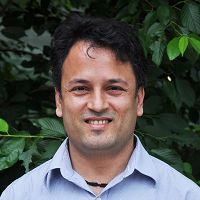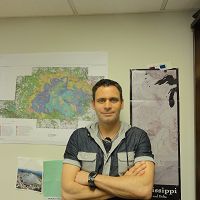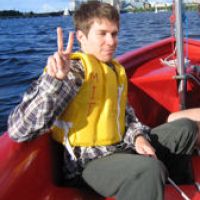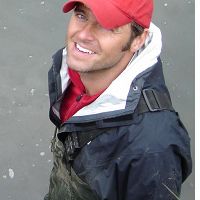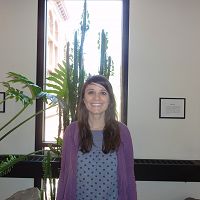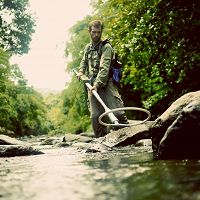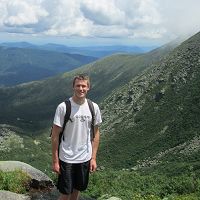Geomorphology Research Group
Geomorphological studies at the LCZO are closely linked to other LCZO research themes including climate and hydrology, weathering and soil production, and coastal deposition and are focused on providing a mechanistic understanding of landscape denudation resulting from two fundamental controls: precipitation and bedrock lithology. The two main study watersheds, the Rio Mamayes and the Rio Blanco, have similar climatic and environmental histories but differing lithology.
This group is tagged with:
-
The Geomorphology of the LCZO
The Luquillo Mountains are the headwaters to 9 rivers that flow through steep, bedrock and boulder-lined channels until they reach their coastal plain alluvial reaches. The Mamayes watershed is primarily volcaniclastic (VC) bedrock that weathers to produce clays and boulders with a wide range of grainsizes, while the Blanco watershed is underlain by granodiorite (GD) which weathers into saprolite comprised of sand and large GD corestones. These differences in weathering patterns have a profound influence on landslide frequency, chemical denudation, and the morphology and longitudinal profiles of streams and hillslopes within the two watersheds. LCZO field studies examine the sediment mobility in these watersheds over two very different timescales: event-based response to individual floods, and millenial-scale estimates of bed material transport through streams. Laboratory and theoretical studies will determine the relative roles of hydrodynamic and granular processes on the initiation and movement of river bed sediment. Event based studies of sediment mobility include tracking the movement of hundreds of individual cobbles and boulders in two watersheds using Radio Frequency Identifiers (RFIDs). Precipitation and stream gages provide high-resolution hydrologic data about storm events, while stream channel morphology and grain size distributions provide necessary data for characterizing hydraulic conditions. Studies of millennial scale landscape erosion involve cosmogenic radionuclide techniques that use insitu and meteoric Beryllium.
Please see additional information on the LCZO data page:
Some examples:
Stream channel response to urbanization in the humid tropical region of NE Puerto Rico
-
Contacts
-
Luquillo, INVESTIGATOR
5 People
Cross-CZO INVESTIGATOR, COLLABORATOR
.(JavaScript must be enabled to view this email address)
Georgia Tech
hydrology, geomorphology
GRAD STUDENT
.(JavaScript must be enabled to view this email address)
Sediment Dynamics
INVESTIGATOR
.(JavaScript must be enabled to view this email address)
UCSD
Geomorphology, Geochemistry
Alumni-Former
INVESTIGATOR, PostDoc
.(JavaScript must be enabled to view this email address)
Ecohydrology
COLLABORATOR
.(JavaScript must be enabled to view this email address)
Quantifying connectivity between different landscape units
GRAD STUDENT
.(JavaScript must be enabled to view this email address)
---
Penn
Geomorphology and Ecology
.(JavaScript must be enabled to view this email address)
Field Technician, Biogeochemistry
-
-
Featured Publications
2010
Lithological and fluvial controls on the geomorphology of tropical montane stream channels in Puerto Rico. Pike, A.S., Scatena, F.N., Wohl, E.E., (2010): Earth Surface Processes and Landforms
1995
Geomorphology, disturbance, and the soil and vegetation of two subtropical wet steepland watersheds of Puerto Rico. Scatena, F.N., Lugo, A.E. (1995): Geomorphology
Explore Further

